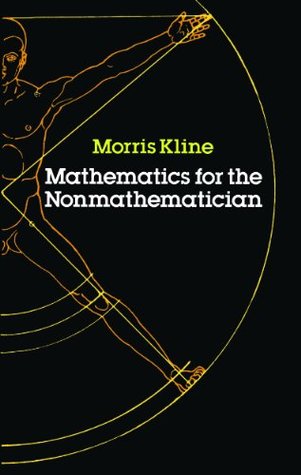More on this book
Community
Kindle Notes & Highlights
by
Morris Kline
Started reading
April 17, 2017
The most pressing scientific problem of the seventeenth century was the study of motion.
On the theoretical side, the new heliocentric astronomy invalidated the older, Aristotelian laws of motion and called for totally new principles. It was one thing to explain why a ball fell to earth on the assumption that the earth was immobile and the center of the universe, and another to explain this phenomenon in the light of the fact that the earth was rotating and revolving around the sun.
The first of these was the notion of a function, a relationship between variables best expressed for most purposes as a formula.
Infused with the conviction that reason, personified by mathematics, would not only conquer the physical world but could solve all of man’s problems and should therefore be employed in every intellectual and artistic enterprise, the great minds of the age undertook a sweeping reorganization of philosophy, religion, ethics, literature, and aesthetics. The beginnings of new sciences such as psychology, economics, and politics were made during these rational investigations.
For reasons which we trust will become clearer further on, the devastation caused by non-Euclidean geometry did not shatter mathematics but released it from bondage to the physical world. The lesson learned from the history of non-Euclidean geometry was that though mathematicians may start with axioms that seem to have little to do with the observable behavior of nature, the axioms and theorems may nevertheless prove applicable.
Mathematics is not a book confined within a cover and bound between brazen clasps, whose contents it needs only patience to ransack; it is not a mine, whose treasures may take long to reduce into possession, but which fill only a limited number of veins and lodes; it is not a soil, whose fertility can be exhausted by the yield of successive harvests; it is not a continent or an ocean, whose area can be mapped out and its contour defined; it is as limitless as the space which it finds too narrow for its aspirations; its possibilities are as infinite as the worlds which are forever crowding in
...more
Let us consider an example. A man goes into a shoe store and buys 3 pairs of shoes at 10 dollars per pair. The storekeeper reasons that 3 pairs times 10 dollars is 30 dollars and asks for 30 dollars in return for the 3 pairs of shoes. If this reasoning is correct, then it is equally correct for the customer to argue that 3 pairs times 10 dollars is 30 pairs of shoes and to walk out with 30 pairs of shoes without handing the storekeeper one cent. The customer may end up in jail, but he may console himself while he languishes there that his reasoning is as sound as the storekeeper’s.
but they preferred the former to the latter. The study of the properties of pure numbers, which they called arithmetica, was esteemed as a worthy activity of the mind, whereas the use of numbers in practical applications, logistica, was deprecated as a mere skill.
And do you not know also that although they make use of the visible forms and reason about them, they are thinking not of these, but of the ideals which they resemble; not of the figures which they draw, but of the absolute square and the absolute diameter . . . they are really seeking to behold the things themselves, which can be seen only with the eye of the mind?
On the basis of elementary abstractions, mathematics creates others which are even more remote from anything real. Negative numbers, equations involving unknowns, formulas, and other concepts we shall encounter are abstractions built upon abstractions.
The very fact that other studies also engage in abstractions raises an important question. Mathematics is confined to some abstractions, numbers and geometrical forms, and to concepts built upon these basic ones. Abstractions such as mass, force, and energy belong to physics, and still other abstractions belong to other subjects. Why doesn’t mathematics also treat forces, wealth, and justice?
But people as original and bold in thought as the Greeks would not have been bound merely by tradition, had they not found in numbers and geometrical forms sharp and clear notions which appealed to their delight in the processes of exact thinking.
Hence to understand the world one should seek this mathematical essence. The brilliance and depth of their conception of the universe will be revealed more and more as we proceed.
It has been said that the process of abstraction amounts to giving the same name to different things, but this very recognition that different objects possess the common property named in the abstraction carries with it the implication that anything true of the abstraction will apply to the several objects.
Plato admits that physical or sensible objects suggest the ideas just as diagrams of geometry suggest abstract geometrical concepts. Hence there is a point to studying physical objects, but one must not lose himself in trivial and confusing minutiae.
He is, to use Plato’s famous simile, like one who lives continuously in the deep shadows of a cave and is suddenly brought out into the sunlight. The study of mathematics helps make the transition from darkness to light.
Hence through the study of mathematics man learns to pass from concrete figures to abstract forms; moreover, this study purifies the mind by drawing it away from the contemplation of the sensible and perishable and leading it to the eternal ideas.
“The understanding of mathematics is necessary for a sound grasp of ethics.”


